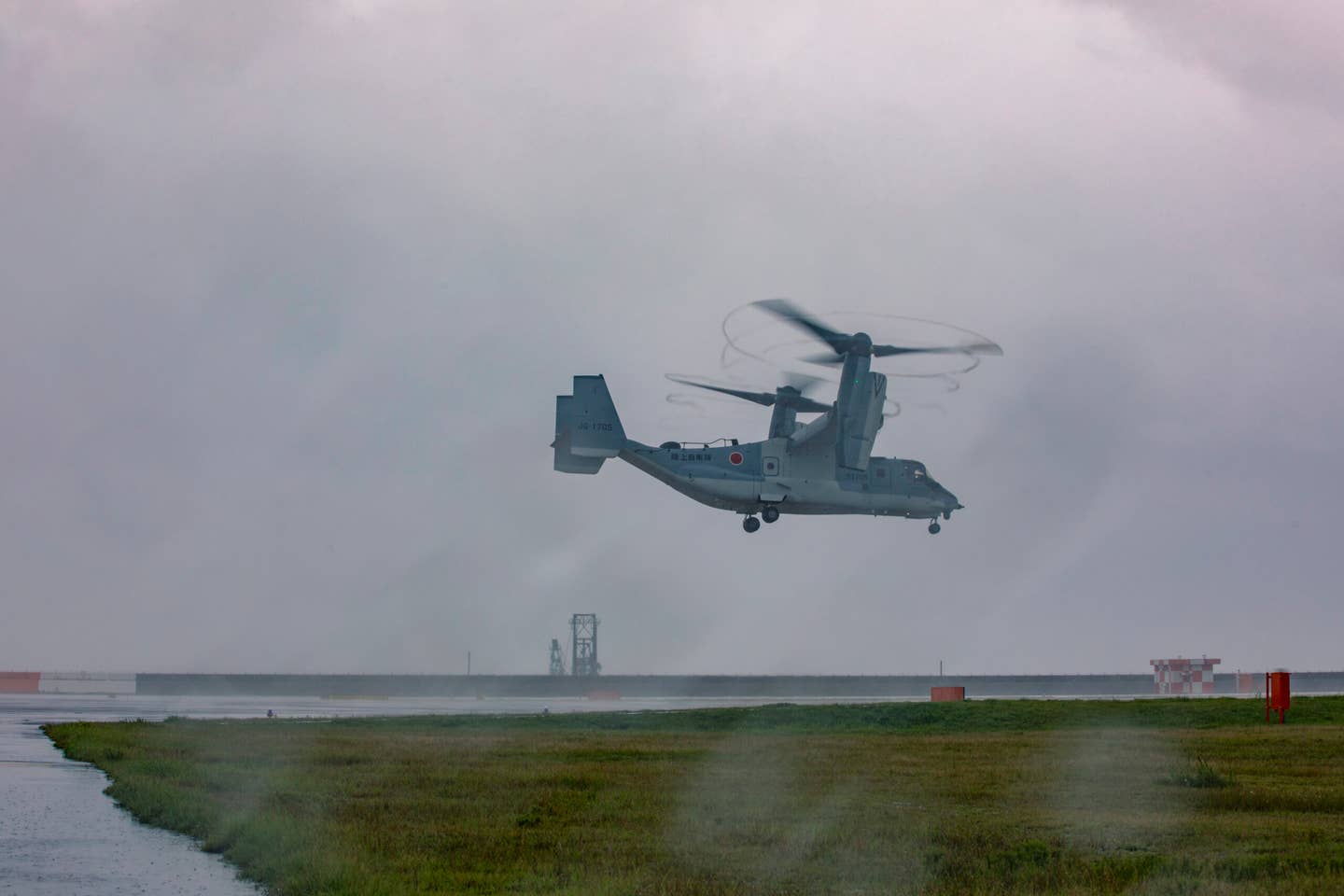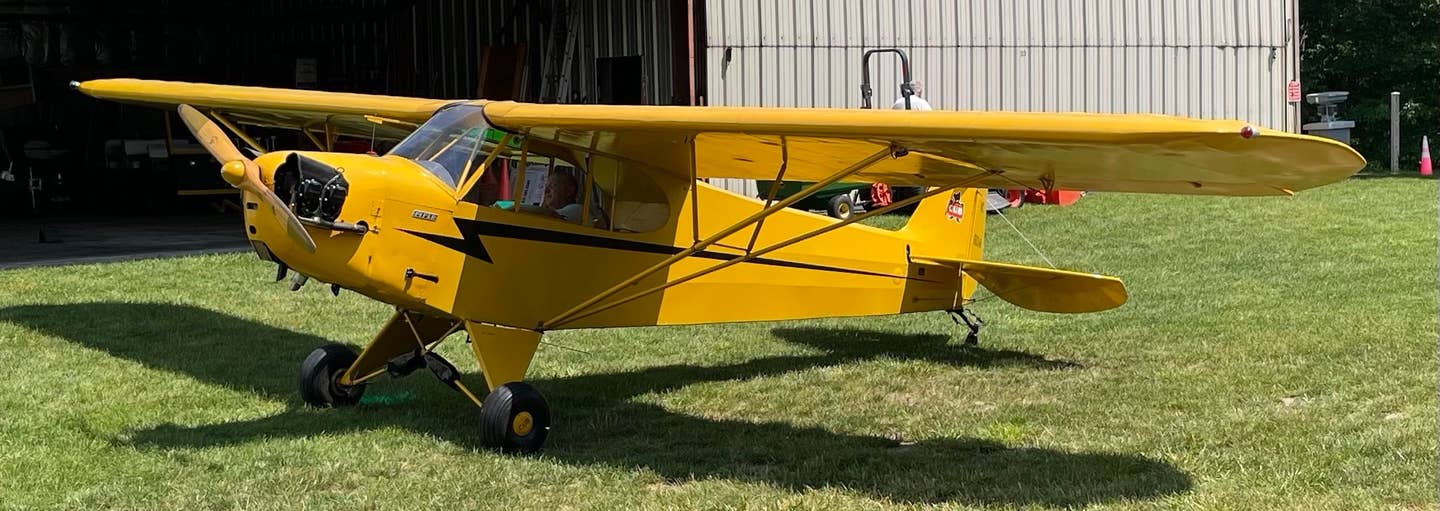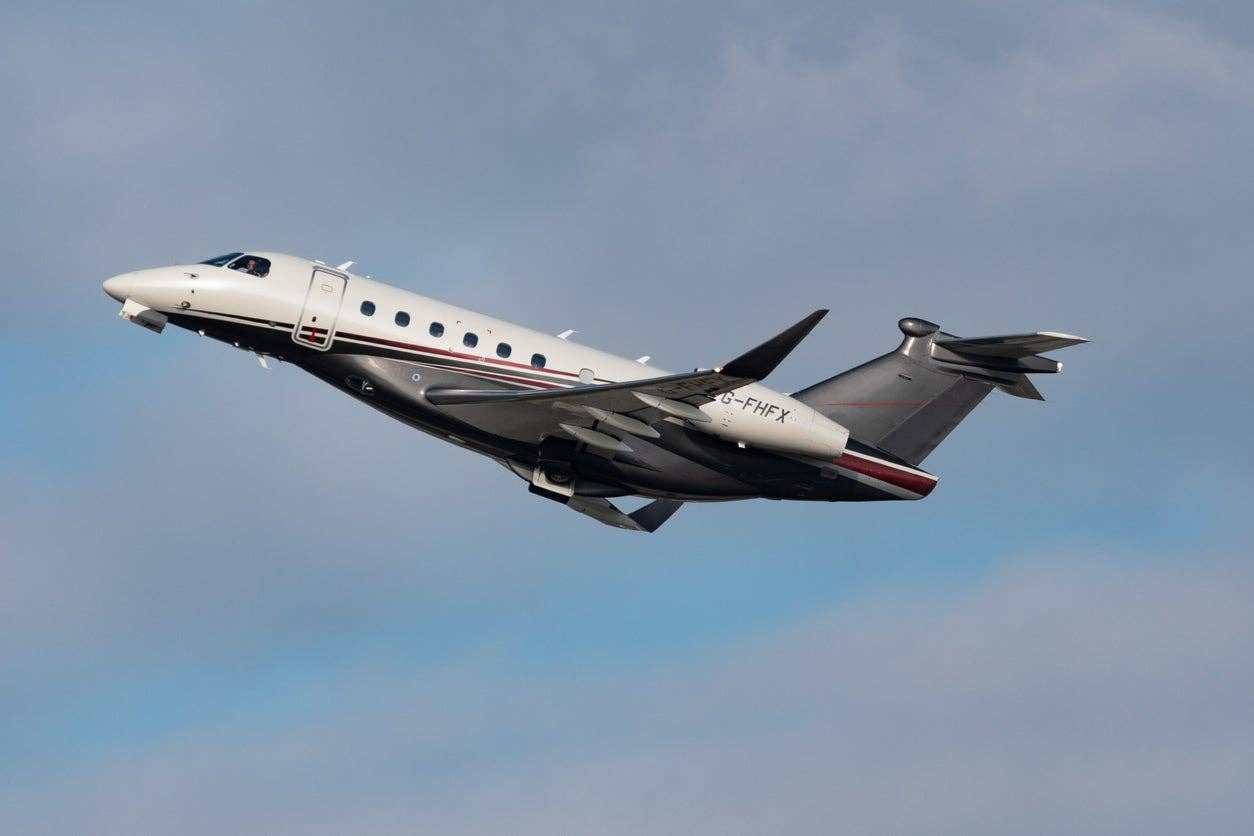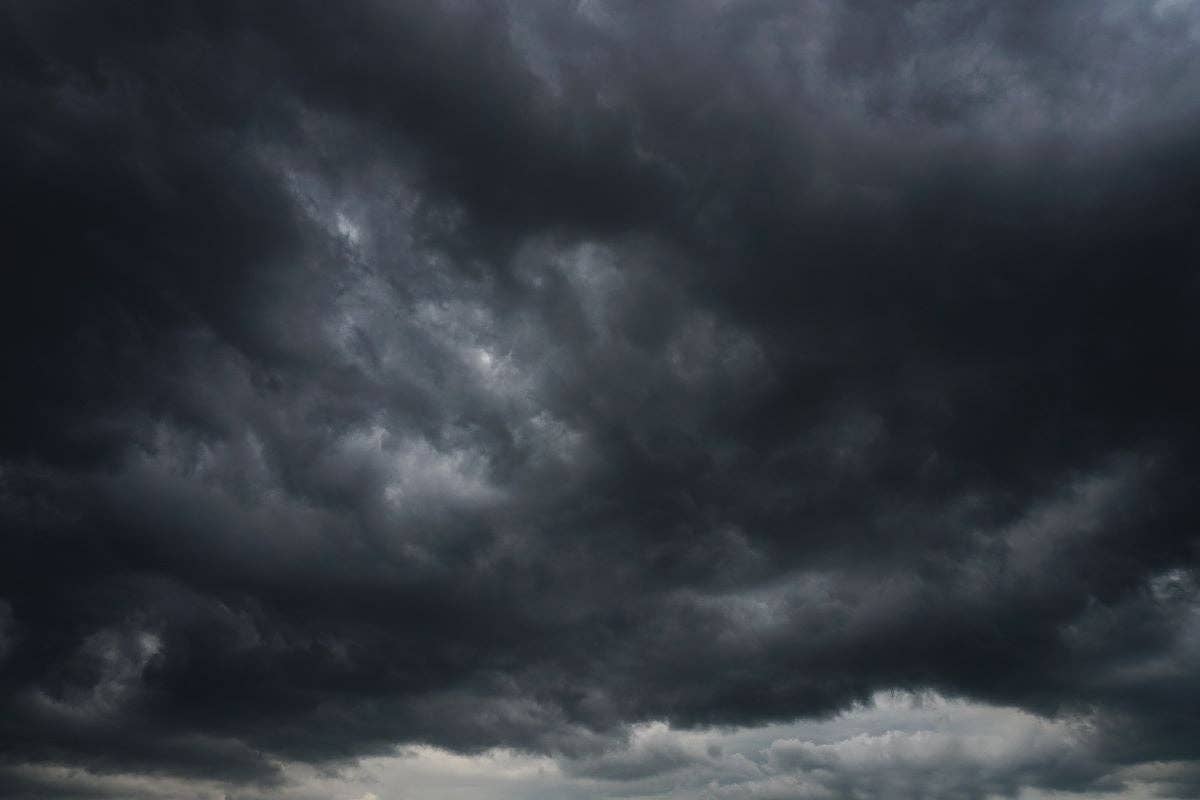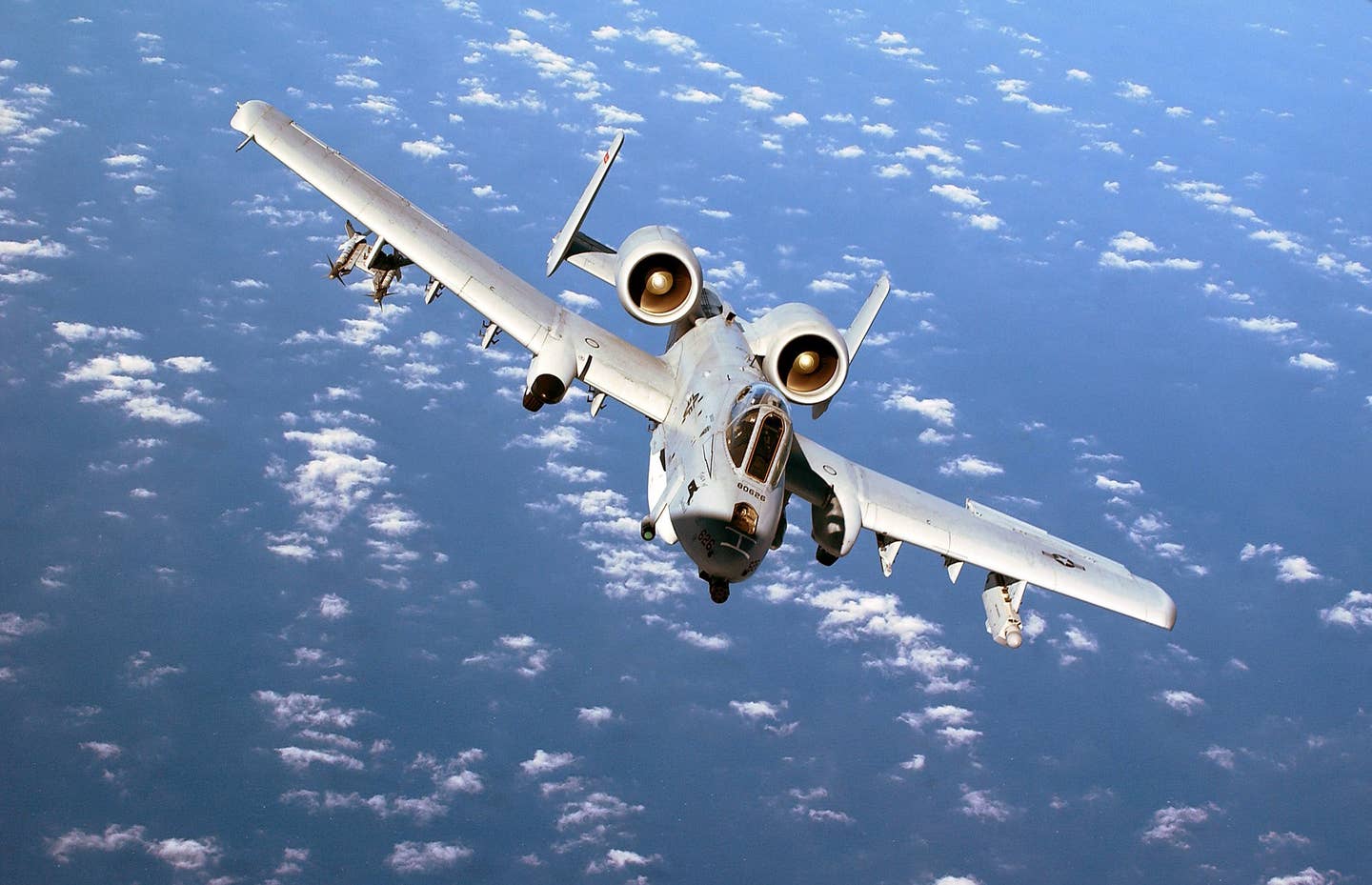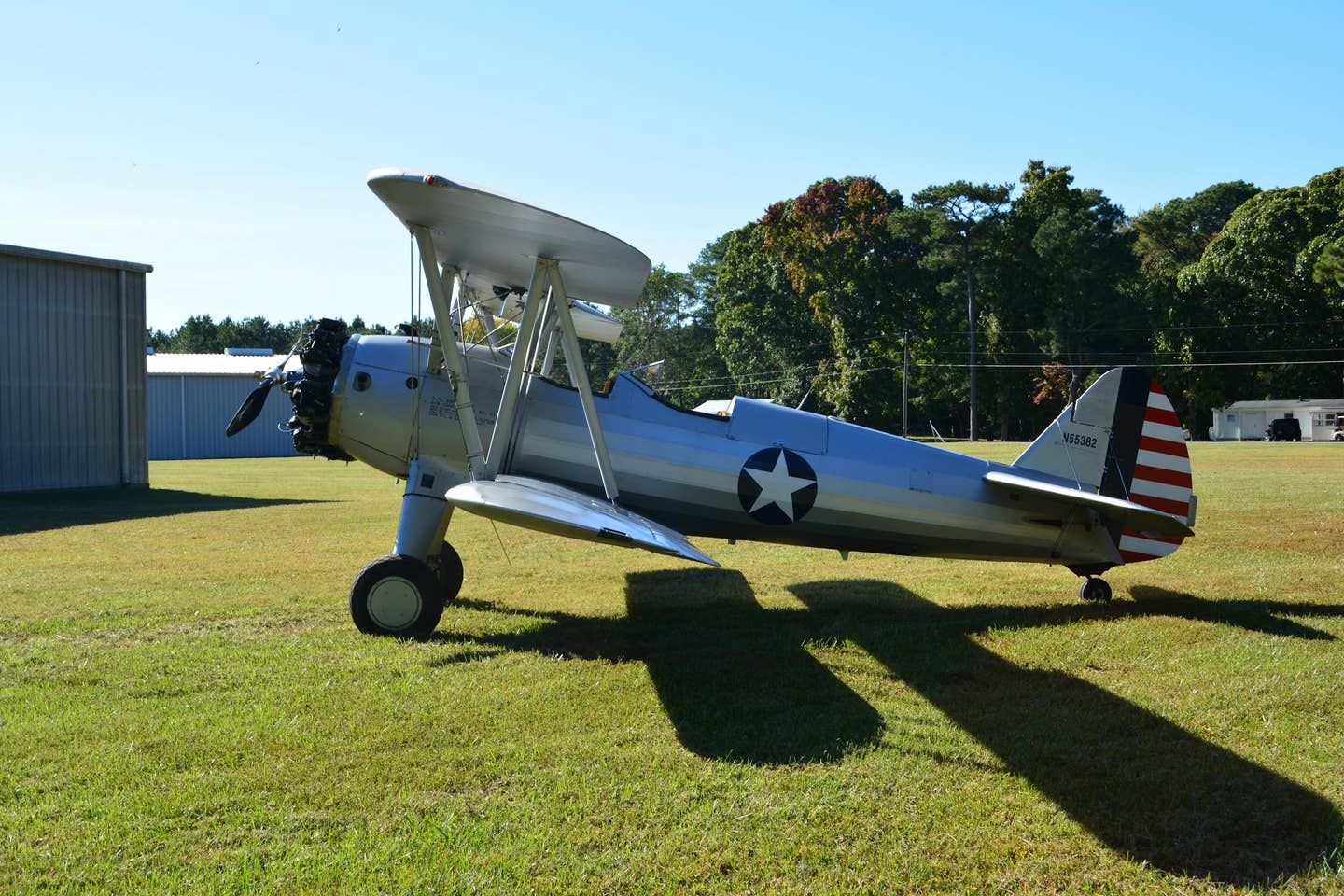
On March 4, 2008, a Citation 500 with five people aboard took off from Wiley Post Airport in Oklahoma City. Two minutes later, it lay a smoking wreckage in a wooded area four miles away.
Many witnesses saw the crash. One reported hearing what "sounded like an engine compressor stall" — that is, a loud pop or bang — and seeing the airplane in a steep dive trailing gray smoke. One observed a "large white cloud of smoke" before the airplane rolled to the left and plunged inverted toward the ground. One reported "what appeared to be pieces of a bird and feathers" falling from the sky; another, after witnessing the dive and the ensuing fireball, spotted "the remains of two large white birds" floating in a nearby lake. He went to get his boat in order to retrieve them, but when he returned the birds were gone.
The airplane, which had struck the ground at high speed, was badly burned and fragmented, but investigators recovered from what remained of its empennage some "splatter residue" that DNA analysis identified as coming from an American white pelican. It was concluded that the Citation had collided with one or more pelicans and had suffered damage to its wing that made the airplane uncontrollable. The "smoke" reported by witnesses was thought to have been fuel vapor from a breached wing tank, since there was no indication of an in-flight fire.
Much of the National Transportation Safety Board's report on this accident is devoted to various irregularities in the licensing and operation of the charter flight, for which, incidentally, no one acknowledged responsibility. The sections that are of greater interest to pilots are those dealing with bird strikes, the ability of airframes to survive them, and possible strategies for avoiding them.
The Citation was level at 3,000 feet and traveling at about 200 knots on radar screens when its path intersected that of a number of primary radar returns assumed, with hindsight, to be the birds. Unfortunately, they were at 3,000 feet as well.
White pelicans are common in Oklahoma in spring. They congregate in large flocks and, like geese, fly in oblique linear formations. All the birds in a formation are at the same altitude, and each is no more than a few feet laterally from its neighbors. That US Airways Flight 1549, the A320 that ditched in the Hudson River in January 2009, got Canada geese in both engines is really not surprising; if you have the bad luck to fly a large airplane into a formation of geese, you are more likely to hit several than to hit only one. But the geese passing by Manhattan on that winter's day probably weighed no more than 12 pounds. Pelicans are more formidable, weighing 20 pounds and having wingspans of more than nine feet.
Transport-category airplanes like the Citation are required to be able to survive a collision with a 4-pound bird — or an 8-pound bird hitting the empennage — at the sea-level cruising speed, which in the case of the Citation is 287 knots. "Survive" does not mean to emerge unscathed, but to remain flyable and able to land safely. Kinetic energy, which is what does the work of damaging the airplane in a collision, is more sensitive to speed than to weight, but even though the Citation was traveling at 200 knots, not 287, the impact energy of a 20-pound bird upon the wing still exceeded the certification requirement by a factor of 2½.
A 20-pound bird moving at a relative velocity of 200 knots is equivalent to a 420-pound object moving at 50 miles an hour or a medium-size car moving at 20. It is intuitively obvious that light structures like those of aircraft cannot be built to survive high-speed collisions with every conceivable bird, or even with some fairly common ones.
The 4-pound and 8-pound standards are somewhat arbitrary. In 1993, the FAA formed a committee with the acronym-resistant name of General Structures Harmonization Working Group to revisit bird-strike standards and, if possible, to bring those of the United States and Europe into alignment. European standards were less stringent than American ones; but the FAA not only saw no reason to reduce the 8-pound requirement for empennage strikes, but also suggested, with the subtlety of a medieval theologian, that it found the 4-pound requirement for the rest of the airframe, including engines, "likely … acceptable" although "probably inadequate." What this seemingly inconsistent assessment meant was that because of the fail-safe character of aircraft structures — "fail-safe" means "still safe after partial failure," not "safe from failure" — they would probably survive most 8-pound strikes, even though they had not been required to demonstrate that they could.
The reason for applying a higher standard to the empennage was, presumably, that it is a comparatively small structure but one that is critical for controlled flight. But the NTSB was unsatisfied. It suspected that current bird-strike standards "have evolved piecemeal … and do not uniformly address the risks … presented by current bird populations," and it urged the FAA to make bird-strike requirements consistent across all aircraft structures. It conceded, however, that "there is no basis to suggest that airframe components should be certificated to withstand impacts from birds [of the size of pelicans]."
Collisions with birds and animals are a recognized hazard in aviation. The FAA Airport/Facility Directory entry for Wiley Post warns of "flocks of birds … all quadrants." A wildlife biologist who surveyed the vicinity of the accident 10 days later observed more than 400 birds, including 28 pelicans and Canada geese as well as 58 double-crested cormorants, many of which must have weighed more than 4 pounds, and more than 100 ducks. Although pilots are routinely cautioned about birds, avoiding a collision is difficult, since a bird, like any object on a collision course, is difficult to see. Although large birds might register as faint dots on a radar screen, radar gives no information about their altitude, and in any case, radar screens are full of random primary returns that controllers necessarily ignore.
One approach to bird avoidance is statistical. A sufficiently detailed database of bird populations and migration paths can be used to assess the probability of bird activity at a given location. The Air Force has developed a computer program that does this; with somewhat dark humor, it is called BAM, for Bird Avoidance Model. After the Citation accident, this oracle was consulted; it reported that the danger of a bird strike at that time and place was medium.
The FAA attempted to gather data on bird strikes by means of Form 5200-7, the Bird/Other Wildlife Strike Report. During a 17-year period, it collected more than 80,000 reports of bird strikes, but concluded that these represented only a fifth of the actual occurrences. If this is the case, then bird strikes occur at a rate of almost 65 per day. However inaccurate the tally may be, however, it is a very large statistical sample and provides a good deal of insight into the character of the hazard. Sixty percent of strikes occurred at or below 100 feet agl, and 92 percent at or below 3,000 feet. (Both the Wiley Post Citation and the LaGuardia A320 met their matches at 3,000 feet.) Not surprisingly, very few strikes occurred during cruise. Most pilots would probably be surprised to learn that more than a third of bird strikes occurred at night. Responding to NTSB concern that bird-strike reports often lacked reliable information as to the type of birds involved, the FAA contracted with the Smithsonian Institution in 2000 for the identification of bird-strike remains, which, by the way, when sufficiently scrambled, are known to specialists as "snarge."
Although a bird strike may seem to be one of aviation's more remote hazards, pilots wishing to stoke their anxieties have but to visit the website of the Bird Strike Committee USA, birdstrike.org. It is crammed with statistics concerning the historical cost, in lives and hardware, of bird strikes, and the burgeoning populations of certain types of large, potentially dangerous birds. It includes an assessment, made a decade ago, that the probability of a fatal bird-strike accident involving a large commercial transport in the coming 10 years was above 25 percent. Indeed, the "miracle on the Hudson," but for lucky location, smooth water and good flying, would have been that accident.
While a general strategy for preventing airplane-bird encounters remains elusive, the NTSB notes that, since kinetic energy is a function of the square of speed, simply reducing speed can reduce the risk of severe damage. For example, the Citation could in principle have survived a collision with a 20-pound pelican if its speed had been 130 knots rather than 200; the safe speed for colliding with a 12-pound goose would be 160 knots.
The NTSB accordingly recommended the FAA require airframe manufacturers to provide operators with simple charts showing the relationship between speed, bird size and airframe strength.
"The NTSB recognizes that pilots face many safety of flight considerations for airspeed selection during airport departures and arrivals," the board wrote. "These may include, but are not limited to, ATC clearances, maneuvering requirements, and desired climb performance or descent rates. The NTSB does not expect that a pilot flying an aircraft in an area with a high risk of bird strikes would select airspeed based on bird-strike energy considerations alone. However, knowledge of the range of target airspeeds within which the aircraft can operate below the bird-strike energy defined by the certification standards could be useful in scenarios in which flying within the target airspeed range is feasible without compromising other safety of flight issues."
This article is based on the NTSB's report of the accident and is intended to bring the issues raised to our readers' attention. It's not intended to judge or to reach any definitive conclusions about the ability or capacity of any person, living or dead, or any aircraft or accessory.

Sign-up for newsletters & special offers!
Get the latest FLYING stories & special offers delivered directly to your inbox

